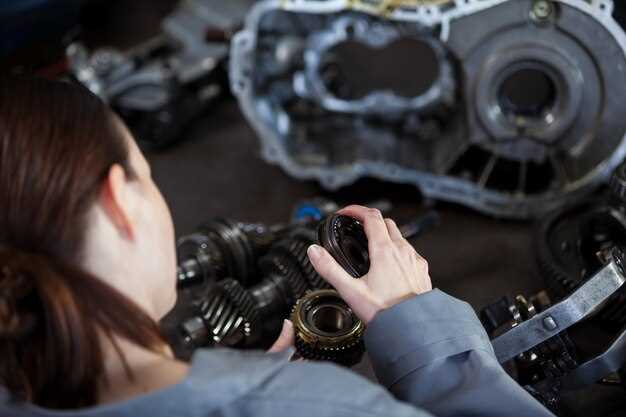
Automatic vs manual transmission – maintenance tips
- Dominique Kaye
- 0
- Posted on

Maintaining your vehicle’s transmission is crucial for ensuring its longevity and optimal performance. Both automatic and manual transmissions require different types of service, and understanding these differences can help you keep your car running smoothly for years to come. Regular maintenance not only enhances the life of your transmission but also improves fuel efficiency and reduces the likelihood of costly repairs down the line.
For automatic transmissions, it’s essential to routinely check and replace the transmission fluid. This fluid serves as a lubricant and coolant, preventing overheating and reducing friction within the system. Neglecting fluid changes can lead to severe transmission issues, so it’s vital to adhere to the manufacturer’s recommendations regarding fluid type and service intervals.
On the other hand, manual transmissions also demand attention, albeit in a slightly different manner. Regularly inspecting the clutch system and ensuring that the transmission fluid is at the proper level can help maintain efficient gear shifting. Understanding the specific needs of your transmission type can help you avoid premature wear and tear, leading to a more enjoyable driving experience.
How to Check and Change Transmission Fluid Regularly
Regularly checking and changing the transmission fluid is essential for maintaining the performance and longevity of both automatic and manual transmissions. Here’s how to ensure this critical service is performed correctly.
Firstly, to check the transmission fluid level, start by parking your vehicle on a level surface and engaging the parking brake. For automatic transmissions, with the engine running, shift through each gear and return to the ‘Park’ position. This allows the fluid to circulate and provides an accurate reading on the dipstick.
Locate the transmission dipstick, usually found near the engine. Withdraw it and wipe it clean with a lint-free cloth. Reinsert the dipstick, remove it again, and examine the fluid level. The fluid should be within the designated markers on the dipstick. If the level is low, additional fluid may be required.
Next, assess the condition of the transmission fluid. Healthy fluid is typically bright red and has a pleasant odor. If the fluid appears brown or has a burnt smell, it’s a sign of potential issues, necessitating a prompt service.
To change the transmission fluid, start by gathering the necessary tools, including a funnel, clean fluid specific to your vehicle, and a drain pan. For automatic transmissions, you may need to remove the transmission pan to allow the old fluid to drain completely. Ensure you replace the transmission filter if your vehicle has one.
Once drained, replace the pan with a new gasket. Using the funnel, add the recommended type and amount of new fluid, then start the engine and let it run for a few minutes. Shift through the gears again to circulate the new fluid. After running the vehicle, recheck the fluid level and add more if necessary.
Performing these steps regularly can help ensure that both automatic and manual transmissions function smoothly, reducing the risk of costly repairs down the line.
Signs of Transmission Problems to Watch For

Identifying transmission issues early can save you time and money on repairs. Both automatic and manual transmissions exhibit specific signs when problems arise. Understanding these indicators can help you address issues before they escalate.
One of the most common signs is slipping gears. In an automatic transmission, you may notice the vehicle unexpectedly changing gears or the engine revving without a corresponding increase in speed. In manual vehicles, the clutch may disengage unexpectedly, making it feel like the car is slipping out of gear.
Shifting difficulties can also indicate transmission trouble. For automatic types, if you experience delayed engagement when shifting from park to drive or a noticeable lag before the car accelerates, this is concerning. In manual transmissions, grinding noises when changing gears may signal worn synchronizers or a failing clutch.
Unusual noises, such as whining, clunking, or buzzing sounds coming from the transmission area, should not be ignored. These sounds often indicate low fluid levels or internal mechanical issues that require immediate attention.
Fluid leaks are a clear red flag for any type of transmission. If you notice reddish-brown puddles beneath your vehicle, it could signify a transmission fluid leak, which can lead to severe damage if not addressed promptly.
Overheating is another crucial warning sign. If your transmission runs hotter than usual, it can cause significant damage to internal components. Check for warning lights on your dashboard, and monitor the temperature closely if your vehicle has that feature.
If you’re experiencing any combination of these signs, it’s essential to consult a qualified mechanic. Early detection and maintenance can prevent more extensive repairs and ensure your transmission operates efficiently.
Best Practices for Driving to Extend Transmission Life

To ensure the longevity of your vehicle’s transmission, adopting careful driving habits is crucial. Smooth acceleration and deceleration minimize stress on the transmission components. Avoid rapid starts and hard stops, opting for gradual changes in speed instead. This not only enhances comfort but also reduces wear and tear on the transmission.
Regularly check and maintain the fluid levels, as transmission fluid lubricates and cools critical components. Low fluid levels can lead to overheating and cause significant damage. Make it a habit to have your transmission fluid serviced according to the manufacturer’s recommendations.
Utilize your vehicle’s engine braking whenever possible, especially when descending hills. This reduces the reliance on brakes and helps maintain optimal transmission function. Additionally, if driving a manual transmission, shift gears at appropriate RPMs to prevent excessive strain.
Avoid towing heavy loads unless your vehicle is designed for it, as doing so can place undue pressure on the transmission. If your vehicle requires frequent towing, consider investing in auxiliary transmission coolers to help manage heat.
Lastly, pay attention to unusual noises or changes in shifting patterns, as these can be early indicators of transmission issues. Addressing concerns promptly through professional service can prevent minor problems from escalating into costly repairs.
